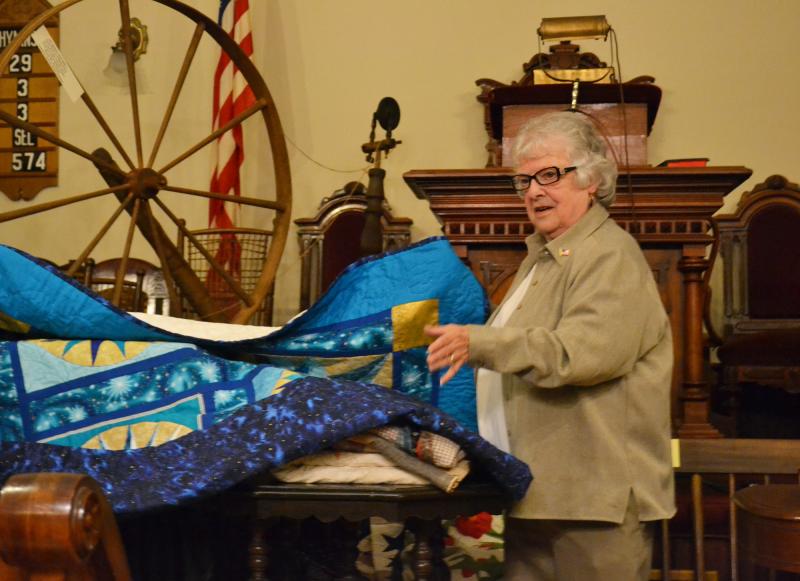Rochester Historical Society discusses wartime quilting
There’s more to quilting than meets the eye, said local teacher Emily McLaughlin. Take a closer look at the shapes, colors and patterns and you could find a secret code that may have helped shape American history.
On Wednesday, May 16, McLaughlin, a former art teacher at Old Rochester Regional High School, discussed the quilting codes with members of the Rochester Historical Society.
Quilting, she said, played a key role during the Civil War years from 1861 to 1865.
With the code, runaway slaves could follow patterns leading them to safety in the North.
“Each pattern in a quilt would tell a slave what to do,” she said. “A monkey wrench would tell them to get their tools ready for escape. A bear’s claw would tell them to follow the bear’s trail through the mountains. Then they could follow the North Star to safety.”
Abolitionists used colors in their quilts as a signal to runaway slaves, she said.
“If someone put a quilt outside that was predominantly blue, that would mean it was a safe house in the Underground Railroad, but it was full,” she said. “If the quilt was predominantly red, that meant there were slave catchers in the area.”
During the war, neither side had enough money to buy blankets for the soldiers so the women had to make them, McLaughlin said.
Over the four-year war, it is estimated women made over 27,000 quilts, she said.
While times have certainly changed, she said the need for quilts has not.
After the September 11 attacks, McLaughlin and her friends took a page out of the history books and made 30 quilts to send to American soldiers stationed overseas.
McLaughlin and her quilters also made flags for the soldiers. Following an old Civil War tradition, the ladies wrapped a pocket size Bible in each flag. The Bibles came with a message of support, such as “Stay well,” or “God bless.”
“After the attacks people didn’t know what to do because it happened so quickly,” she said. “There’s always a need. They were so appreciative. They sent me an Army shirt.”















